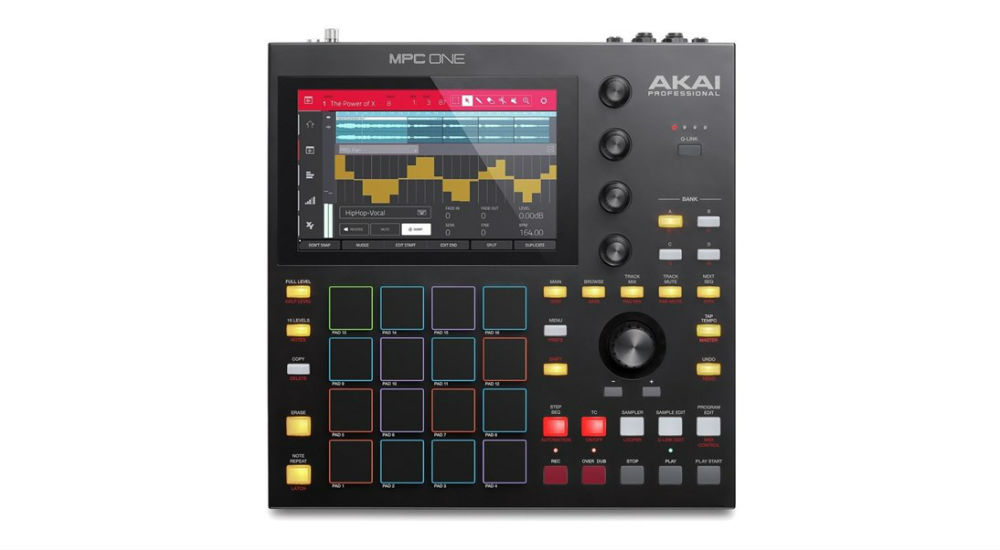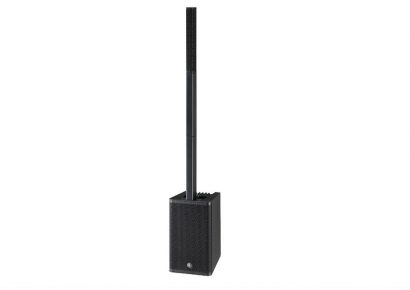Electric Factory | elfa.com.au | Expect to pay: A$1199
It’s a common desire amongst music producers to find a sequencer/sampler/synth to operate as the brain of your hardware setup that can also serve as an autonomous machine to perform live with. Enter the Akai MPC One, building on the rich legacy that stretches back to the MPC60 in 1988.
Check out our updated review of the MPC ONE here.
The MPC One has the same powerful multicore engine as its recent predecessors; the MPC Live and MPC Touch and it handles its internal synth engine, sampling, sequencer and lush FX with ease. 16 velocity-sensitive touchpads hark back to the MPC1000 glory days but feel considerably more durable and receptive. At 27.2 cm squared it’s the perfect size to fit in a backpack, and all the dials, buttons and touchscreen are comfortable to use; not overly crowded.
The user interface via the vibrant, seven-inch Multi-Touch display and accompanying buttons and dials will feel familiar and intuitive to anyone that’s used an MPC before, and for the uninitiated, it shouldn’t be too steep a learning curve. Initially I feared I was overly reliant on the touchscreen but soon realised many buttons served as shortcuts to the page I desired and was primarily using the screen to fine-tune the parameters. The flexible Q-Link dials help keep the experience tactile. The FX section is so dynamic and can be applied in many interesting ways; assigned to a specific pad, to all of the pads on a track or the entire mix. An XY effects section offers a tactile multi-dimensional experience where the two-axis serve as two effects at once or two parameters of one effect. There are the classics like beat repeat, multimode filters, phaser, flanger, delay as well as tape-stop for the old school hip-hop enthusiasts.
Transferring samples from SD card or hard-drive is simple and sampling via the stereo TRS inputs equally so. The waveform editor lets you define the start, end and loop points and the experience was as refined as you’d expect from a company that’s been at the forefront of this process for the past 30 years. It’s easy to explode out drum patterns into individual tracks or bounce down tracks into wave files for transfer. It ships with 2GB of ram, 2GB of Internal Storage and 2GB of pre-installed content. An SD slot serves as additional storage and a USB 2.0 slot opens things up even further, while also allowing for use as a midi controller with Standalone. A lot of these features are covered by MPC Touch and Live (which you’ll have to spend a lot more on) but something brand new is the four sets of CV/Gate outputs. Hooking up a modular synth, writing a CV line and sampling the output to be mangled by the effects is a breeze. Network connectivity opens up the ability to download all the additional samples available through your Splice account.
The omissions from the more expensive recent models (like the Live) are mostly memory and inputs, and while some turntable samplers might need RCA in, a decent adapter isn’t a large additional cost. The 2GB internal memory limit is offset by the combination of SD cards and external hard-drives. My main criticism would be the lack of external tracks to route some of the hardware you can sequence through its FX and mixer, but the fact you can easily sample these into the machine means this isn’t a major concern. There’s a lot to love about the MPC One; immediate sampling, tactile interaction and thumping sonic presence. It shines in so many applications and I can see it being popular with a whole generation of music producers.

